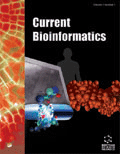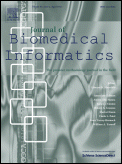
Annual Review of Biomedical Data Science
Scope & Guideline
Exploring the Frontiers of Biomedical Research
Introduction
Aims and Scopes
- Data Integration and Analysis:
The journal emphasizes methodologies for integrating diverse data types, including genomic, proteomic, and clinical data, to derive meaningful insights in biomedical research. - Artificial Intelligence and Machine Learning Applications:
There is a strong focus on the application of AI and machine learning techniques in biomedical contexts, exploring their role in predictive modeling, diagnostics, and personalized medicine. - Ethical Considerations in Biomedical Data Science:
The journal addresses the ethical implications of data usage in biomedicine, including issues of privacy, consent, and bias, ensuring that advancements are responsible and equitable. - Emerging Technologies and Methodologies:
The journal reviews cutting-edge technologies such as single-cell omics, deep learning models, and computational methods, providing a platform for discussing their impact on biomedical research. - Population Health and Disease Epidemiology:
An important scope of the journal includes studies on population health, disease trajectories, and the implications of genetic diversity on health outcomes.
Trending and Emerging
- Single-Cell Omics and Multiomics:
There is a growing emphasis on single-cell technologies and multiomics approaches, which enable detailed insights into cellular heterogeneity and complex biological processes. - Privacy and Ethical Frameworks:
With increasing concerns about data privacy and ethics, publications focused on privacy-enhancing technologies and ethical considerations are becoming more prevalent. - AI-Driven Precision Medicine:
The integration of artificial intelligence in developing precision medicine strategies is a major emerging theme, highlighting its potential for personalized treatment approaches. - Federated Learning and Data Sharing:
The rise of federated learning, which promotes collaborative data analysis while preserving privacy, is gaining attention as a method to enhance research without compromising data security. - Real-World Evidence Generation:
The focus on generating real-world evidence from healthcare data to inform clinical practices and policy decisions is an emerging trend that reflects the journal's commitment to impactful research.
Declining or Waning
- Traditional Epidemiological Methods:
While still relevant, traditional epidemiological approaches are witnessing a decline as newer data science methodologies become more favored for analyzing complex health data. - Static Data Analysis Techniques:
There is a noticeable reduction in publications focusing solely on static data analysis, as the field shifts towards dynamic and real-time data analytics. - General Overviews of Established Techniques:
Papers providing broad overviews of established techniques without innovative insights are decreasing, as the journal encourages more specialized and advanced discussions.
Similar Journals

Biocybernetics and Biomedical Engineering
Unleashing the Potential of AI in HealthcareBiocybernetics and Biomedical Engineering, published by ELSEVIER in the Netherlands, is a prestigious journal that stands at the forefront of the intersecting fields of biomedical engineering and artificial intelligence. With an impressive Impact Factor that places it in the Q1 category for Biomedical Engineering, this journal not only ranks 17th out of 303 in Scopus but also boasts a remarkable percentile ranking of 94th, highlighting its influence and relevance within the scientific community. Since its inception in 2008, Biocybernetics and Biomedical Engineering has aimed to publish cutting-edge research that integrates principles of cybernetics with technological advancements in health care, thereby fostering innovations that improve patient outcomes. Dedicated to advancing knowledge in biomedical technology, the journal serves as a vital resource for researchers, professionals, and students seeking to explore the latest developments and methodologies in the field.

Big Data Mining and Analytics
Catalyzing Interdisciplinary Collaboration in AnalyticsBig Data Mining and Analytics, published by TSINGHUA UNIVERSITY PRESS, stands at the forefront of interdisciplinary research in the fields of Artificial Intelligence, Computer Networks and Communications, Computer Science Applications, and Information Systems. With an impressive Q1 ranking in multiple categories as of 2023, this journal serves as a critical platform for researchers and professionals eager to explore innovative techniques and methodologies related to big data analytics. Since its transition to Open Access in 2018, Big Data Mining and Analytics has aimed to increase the visibility and accessibility of its cutting-edge research, making permanent strides in the global academic landscape. Housed in Beijing, China, and actively embracing the converged years from 2018 to 2024, the journal aims to cultivate a rich discourse on emerging trends and applications, ensuring its relevance in a rapidly evolving technological environment. Join a vibrant community of scholars dedicated to advancing the frontiers of knowledge in big data.

JOURNAL OF UNIVERSAL COMPUTER SCIENCE
Connecting researchers to the forefront of technology.JOURNAL OF UNIVERSAL COMPUTER SCIENCE, published by Graz University of Technology's Institute for Information Systems and Computer Media (IICM), stands as a pivotal resource in the field of computer science. Since its inception in 1994, this Open Access Journal has fostered a culture of knowledge sharing and collaboration, allowing readers from all corners of the globe to access cutting-edge research without barriers. With an impressive convergence of studies spanning from 1996 to 2024, the journal covers a breadth of topics within Computer Science, achieving a Q3 ranking in miscellaneous areas and a Q4 ranking in theoretical computer science as of 2023. It also holds significant standing in Scopus rankings, demonstrating its influence and reach among the scientific community. The journal is particularly valuable to researchers, professionals, and students eager to explore innovative ideas and techniques that push the boundaries of computer science. Based in Austria, the journal is dedicated to maintaining high standards of scholarly integrity while promoting interdisciplinary discourse and advancements in technology.

Intelligent Medicine
Advancing medical practice with cutting-edge AI research.Intelligent Medicine, published by Elsevier, is a leading open-access journal dedicated to advancing the fields of Artificial Intelligence, Biomedical Engineering, Health Informatics, and related areas within Medicine. Since its inception in 2021, it has quickly established itself among the top tier of academic publications, holding a commendable Q2 ranking in several categories, including a rank of #51 in Health Informatics and #104 in Medicine (Miscellaneous) as of 2023. The journal aims to disseminate innovative research that harnesses AI technologies to improve healthcare outcomes, bridging the gap between cutting-edge technology and medical practice. With its open-access model, Intelligent Medicine ensures broad dissemination of research findings, facilitating collaboration and knowledge sharing among researchers, practitioners, and students globally. Located in Amsterdam, Netherlands, this journal plays a pivotal role in shaping the future of intelligent healthcare solutions, inviting submissions that push the boundaries of conventional medicine through creative and impactful research.

IEEE Journal of Biomedical and Health Informatics
Elevating Healthcare Solutions with Cutting-Edge InsightsIEEE Journal of Biomedical and Health Informatics is a premier publication dedicated to advancing the field of biomedical and health informatics. Published by the esteemed IEEE-Inst Electrical Electronics Engineers Inc, this journal boasts a notable impact within various disciplines, ranking in the top quartile (Q1) across key categories such as Biotechnology, Computer Science Applications, Electrical and Electronic Engineering, Health Informatics, and Health Information Management as of 2023. With a strong Scopus ranking—placing it at #11 in Health Informatics and #6 in Health Information Management—it serves as a vital resource for cutting-edge research and innovative practices. Open Access options enhance accessibility, fostering collaboration among researchers, professionals, and students. Since its inception in 2013, the journal has been committed to publishing high-quality, peer-reviewed articles that explore the pivotal intersection between technology and healthcare, thereby contributing significantly to the evolution of medical practices and patient care.

Current Bioinformatics
Innovating Computational Techniques for Biological InsightsCurrent Bioinformatics, an esteemed journal published by Bentham Science Publishers Ltd, serves as a pivotal platform for the dissemination of cutting-edge research in the fields of bioinformatics, biochemistry, computational mathematics, genetics, and molecular biology. With an ISSN of 1574-8936 and an E-ISSN of 2212-392X, this journal has established itself as a vital resource for researchers, professionals, and students keen on exploring interdisciplinary approaches to biological data analysis. Its prominence is reflected in its quartile rankings for 2023, where it stands in Q3 for biochemistry and computational mathematics, alongside Q4 rankings in genetics and molecular biology. Current Bioinformatics, located in the United Arab Emirates and converging from 2007 to 2024, aims to foster innovation in the field by presenting original research articles, reviews, and case studies that drive forward our understanding of complex biological systems through computational techniques. This journal is an integral resource for those wishing to stay at the forefront of bioinformatics research and applications.

JOURNAL OF BIOMEDICAL INFORMATICS
Pioneering research at the crossroads of technology and medicine.JOURNAL OF BIOMEDICAL INFORMATICS, published by Academic Press Inc. Elsevier Science, is a premier peer-reviewed journal dedicated to the integration of computer science and health informatics to advance the field of biomedical engineering and healthcare. With its ISSN 1532-0464 and E-ISSN 1532-0480, this influential journal has established itself with an impressive impact factor, reflecting its high-quality research contributions. Recognized within the top quartile (Q1) of both Computer Science Applications and Health Informatics for 2023, the journal ranks #135 out of 817 in Computer Science Applications and #25 out of 138 in Health Informatics according to Scopus metrics. Offering open access options, it fosters extensive dissemination and accessibility of groundbreaking research findings to the scientific community. As a scholarly platform from 2001 to 2024, it is engineered to cater to the educational needs of researchers, professionals, and students, promoting innovative studies that bridge the gap between technology and healthcare.

Network Modeling and Analysis in Health Informatics and Bioinformatics
Connecting research to enhance patient care and medical insights.Network Modeling and Analysis in Health Informatics and Bioinformatics, published by SPRINGER WIEN, stands as a vital resource in the interdisciplinary domains of health informatics and bioinformatics. With an ISSN of 2192-6662 and E-ISSN of 2192-6670, this journal aims to facilitate the dissemination of innovative research that intersects network modeling, data analysis, and health applications. The journal competes at a Q3 quartile level across multiple categories including Biomedical Engineering and Health Informatics, showcasing its growing influence within the academic community. As of 2023, it holds impressive Scopus rankings, including a 20th position in Urology, illustrating its significance in the field. Although not an open access publication, the journal is dedicated to providing cutting-edge insights from 2012 to 2024 and is poised to attract researchers, professionals, and students striving to push the boundaries of knowledge in health informatics and bioinformatics. This journal is not just a platform for sharing scholarly articles; it is a catalyst for advancing methodologies that enhance patient care and medical research.

BME Frontiers
Empowering Research to Transform HealthcareBME Frontiers, published by the American Association for the Advancement of Science, is an innovative open-access journal dedicated to the burgeoning field of Biomedical Engineering. Since its establishment in 2020, this journal has aimed to bridge the gap between cutting-edge research and practical application, promoting advancements in biomedical technologies, medical devices, and healthcare solutions. Boasting impressive rankings within Scopus—64th among 398 in Medicine (miscellaneous) and 81st among 303 in Biomedical Engineering—BME Frontiers stands out as a significant contributor to scholarly communication, offering rich insights for researchers, professionals, and students alike. With consistent publication projected through 2024, the journal serves as an essential platform for disseminating high-quality research that can drive innovation and inspire new approaches in the healthcare sector.

Statistics in Biosciences
Driving Innovation at the Intersection of Stats and Life SciencesStatistics in Biosciences is a distinguished journal published by Springer, focusing on the innovative interplay between statistical methodologies and biosciences. Established in 2009, this journal aims to provide a platform for the dissemination of cutting-edge research in statistical applications within biochemistry, genetics, and molecular biology. With an impressive impact factor and a distinguished ranking in multiple categories, including Q2 in Biochemistry, Genetics and Molecular Biology (miscellaneous) and Q3 in Statistics and Probability, it serves as a crucial resource for researchers, professionals, and students seeking to deepen their understanding of statistical applications in biological contexts. The journal is accessible through traditional subscription models, ensuring that high-quality research remains available to a wide audience. Featuring contributions that advance statistical theory and application in the biosciences, Statistics in Biosciences is committed to fostering collaboration and innovation in a rapidly evolving scientific landscape.